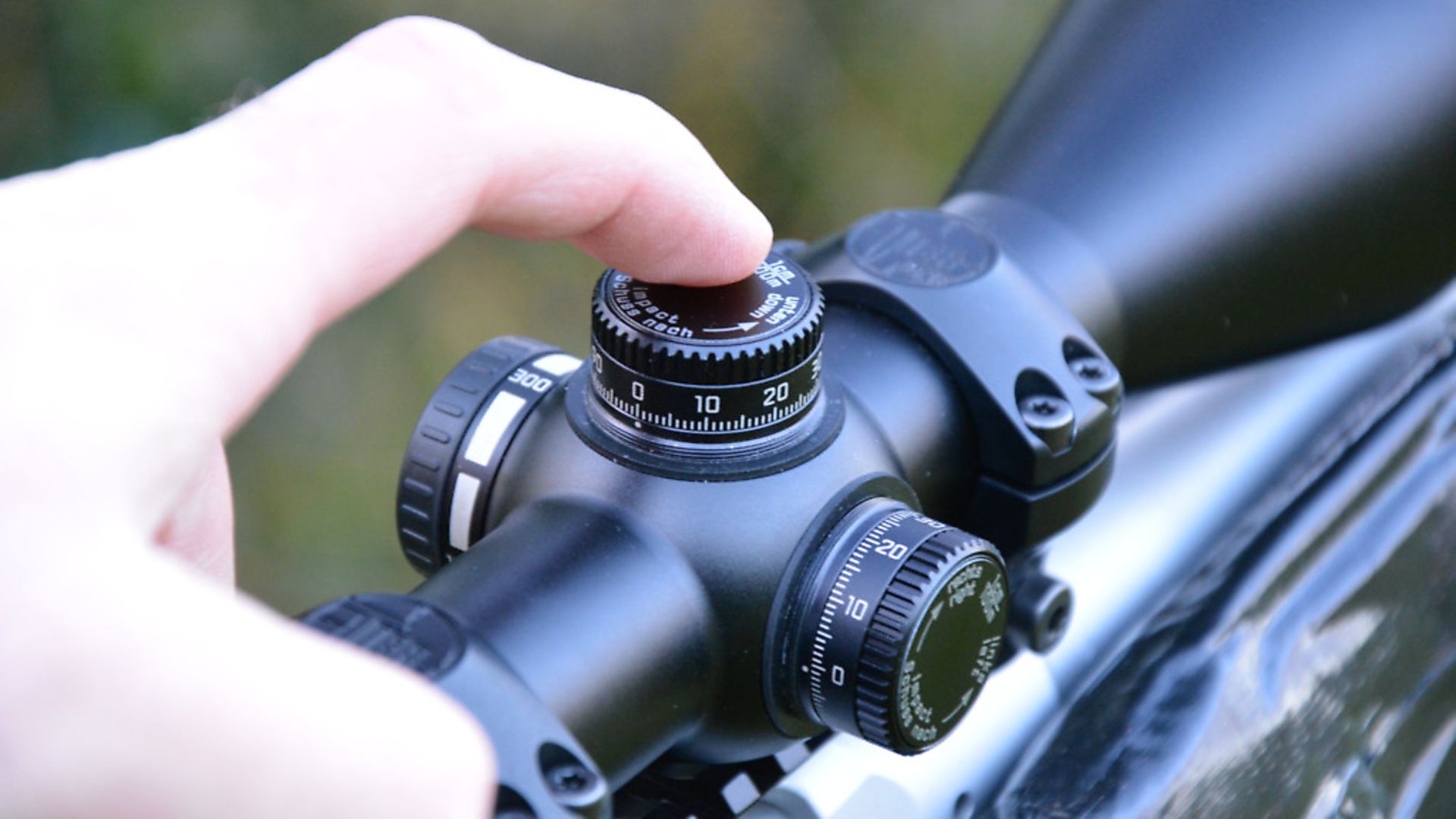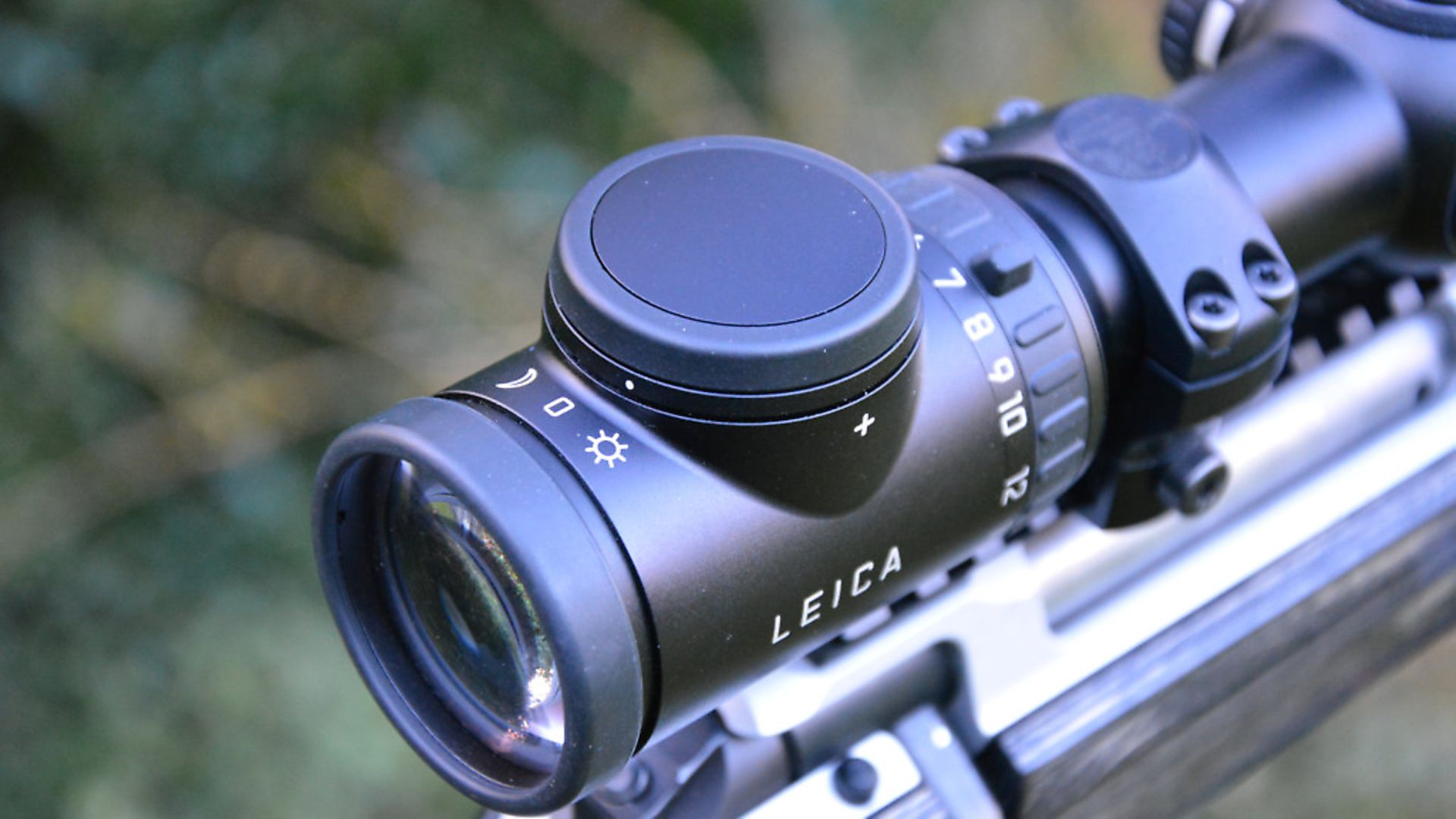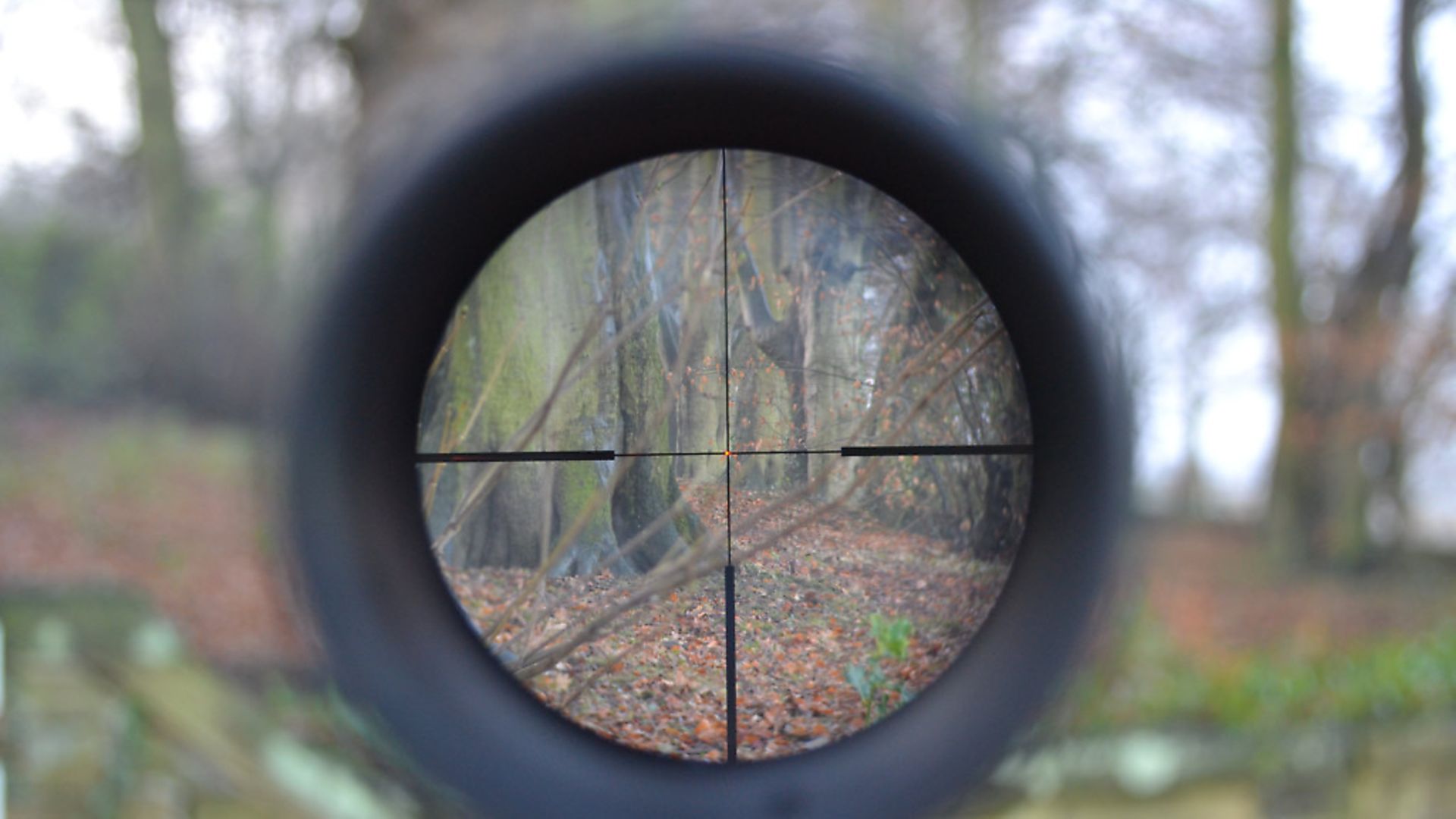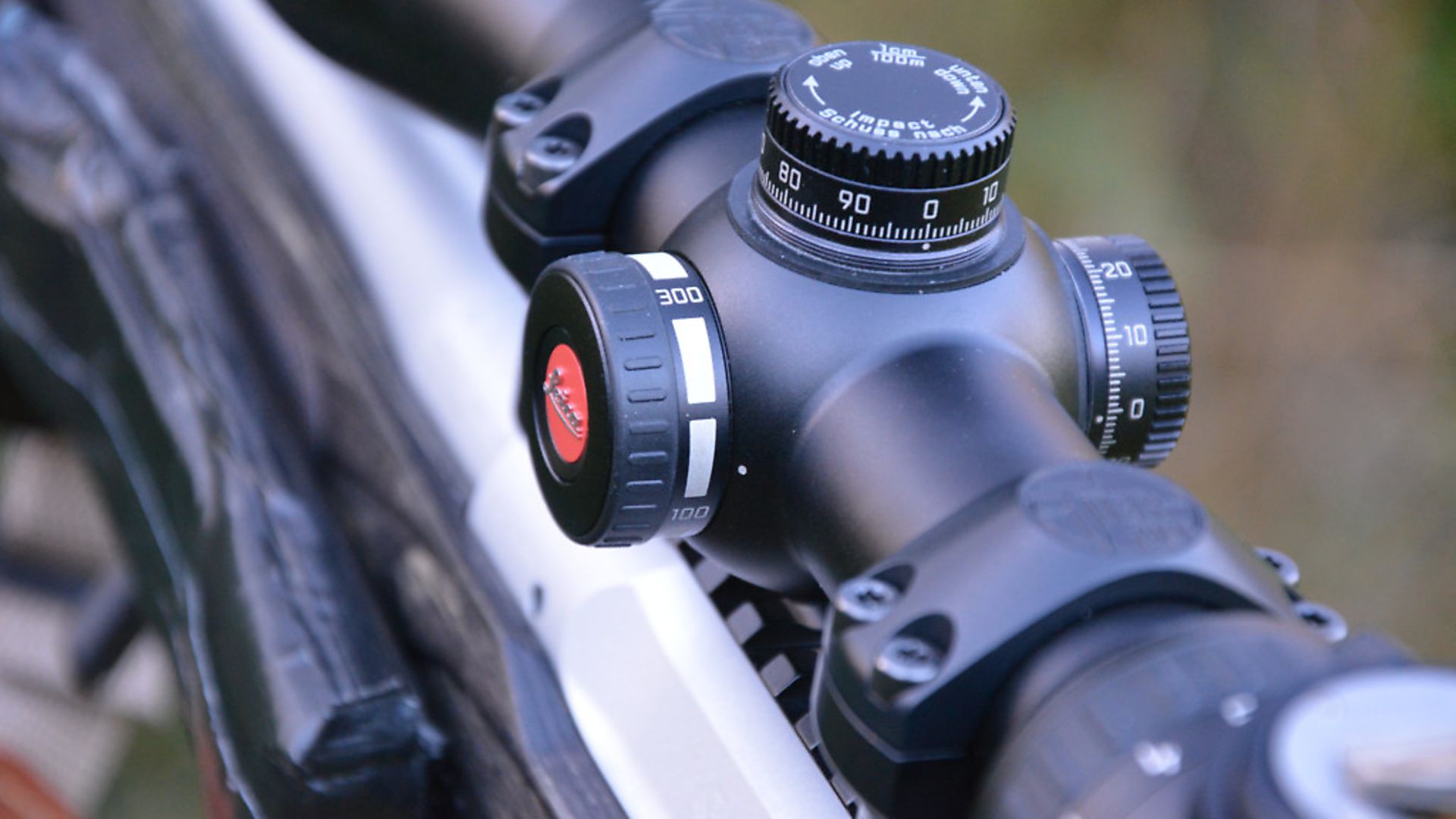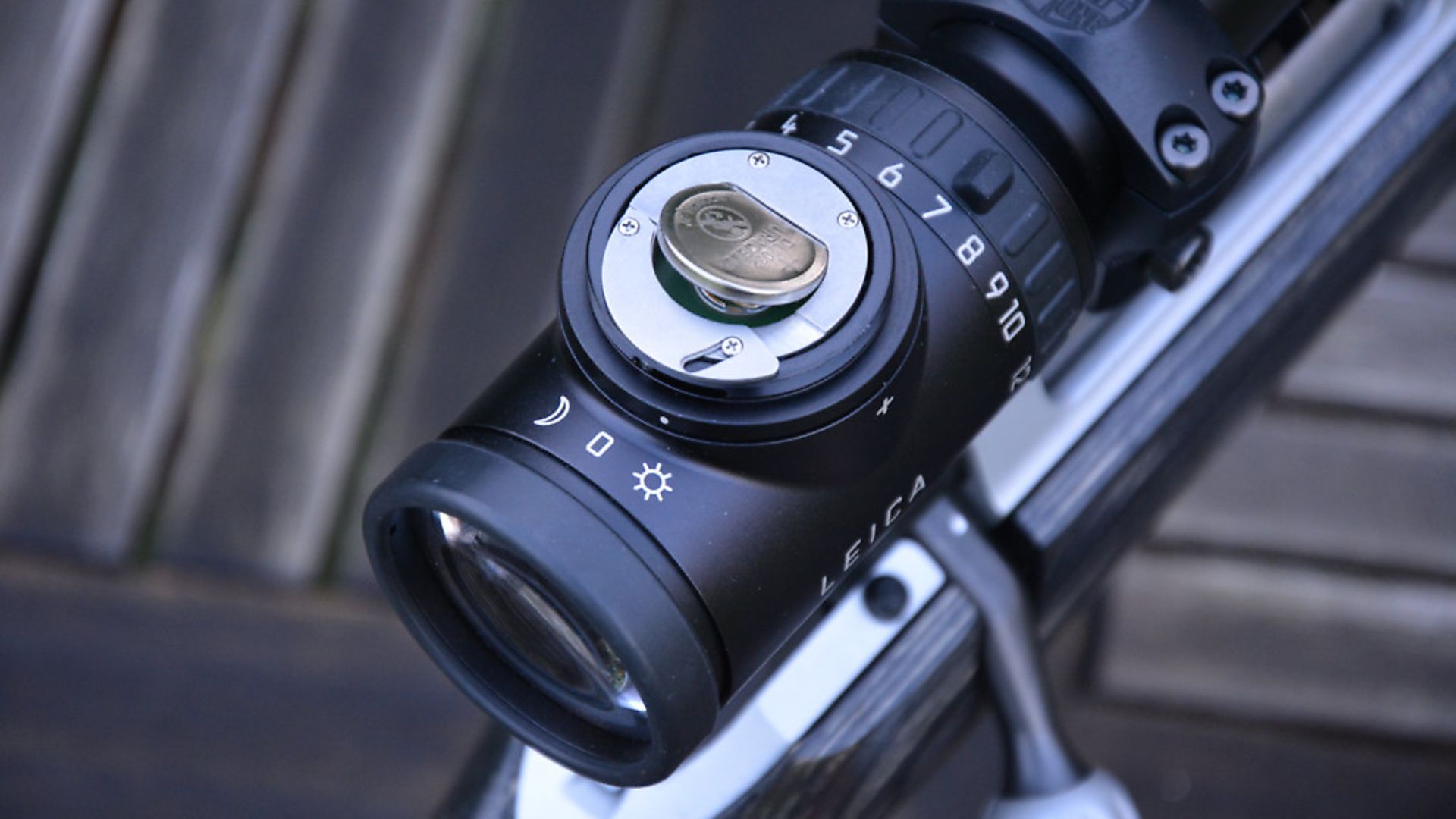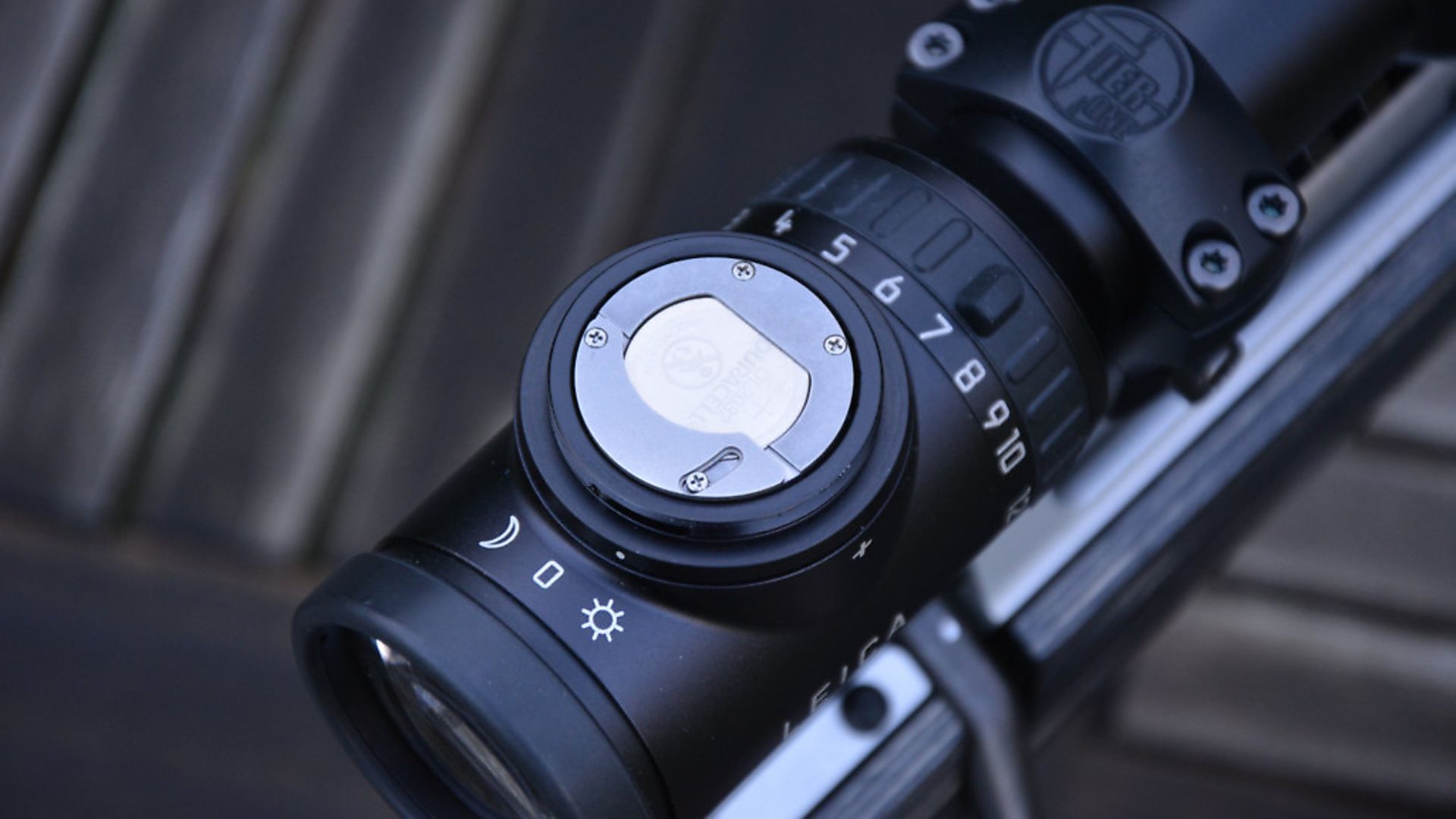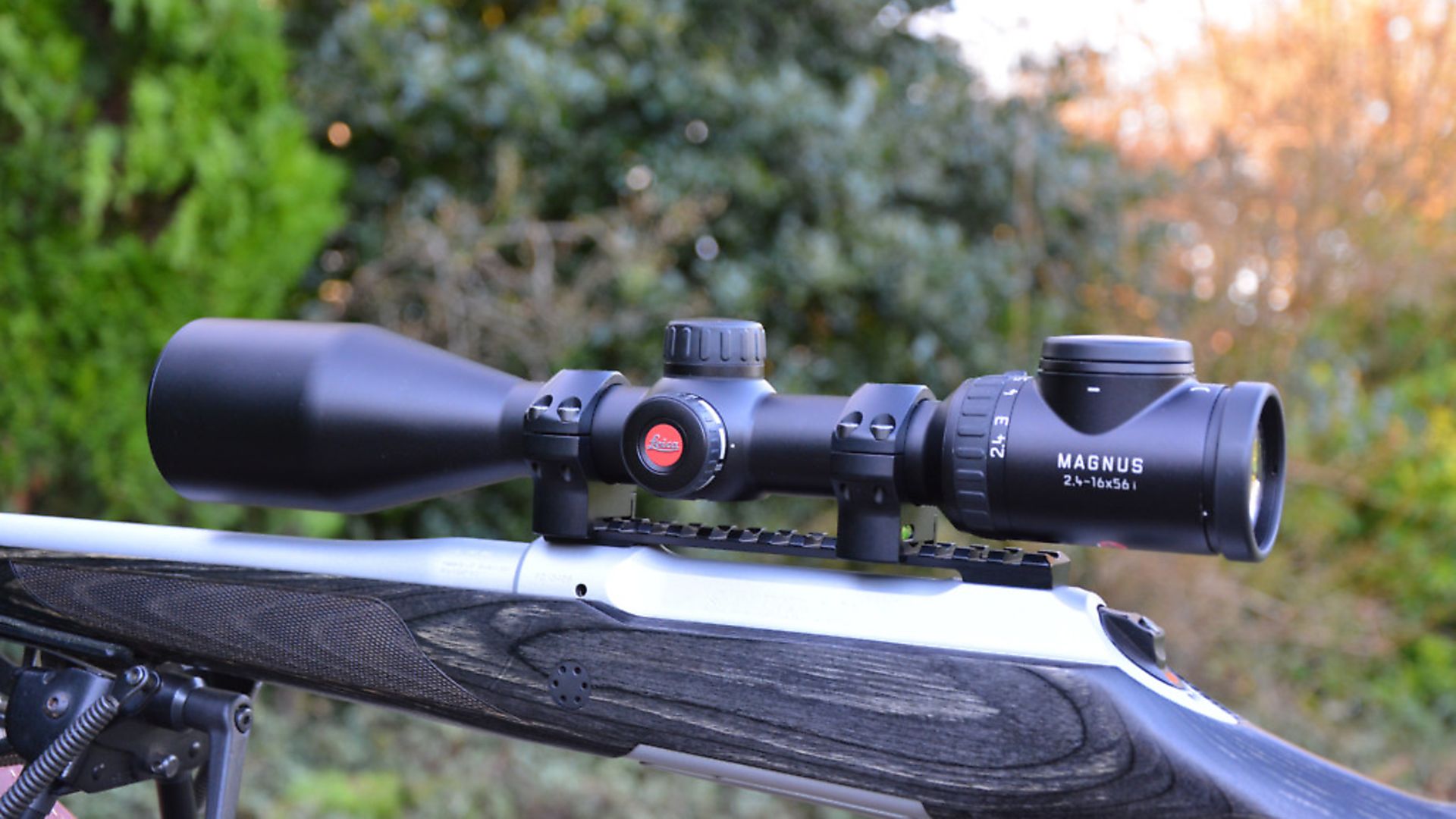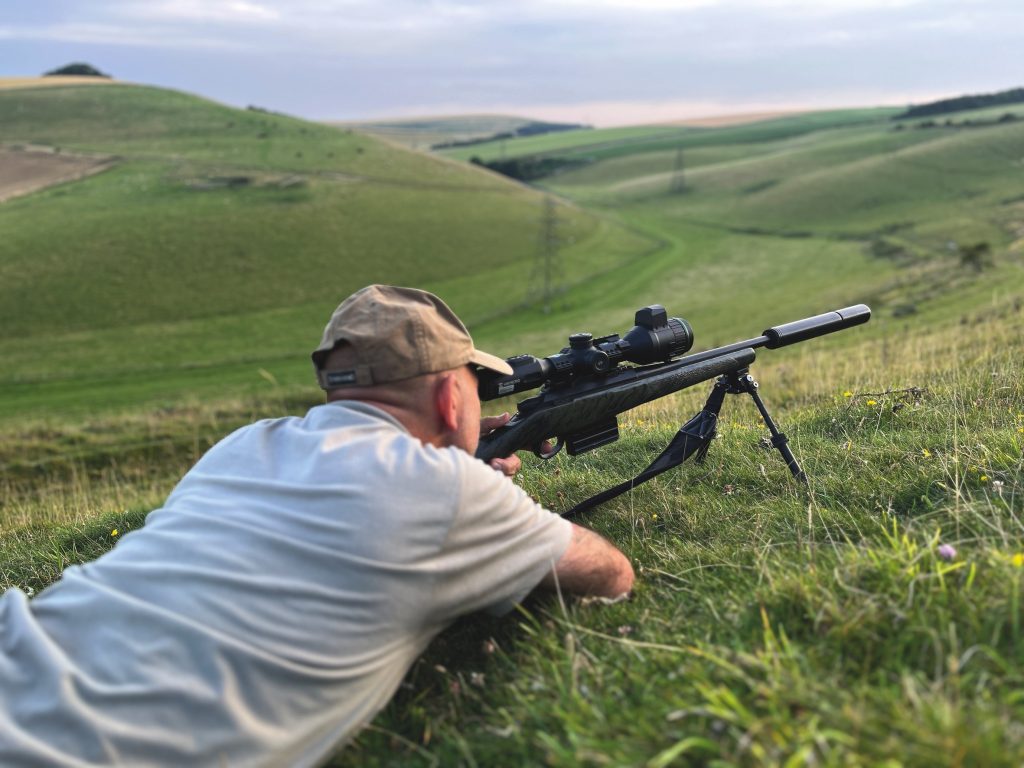Leica Magnus 2.4-16×56 – in depth test and review
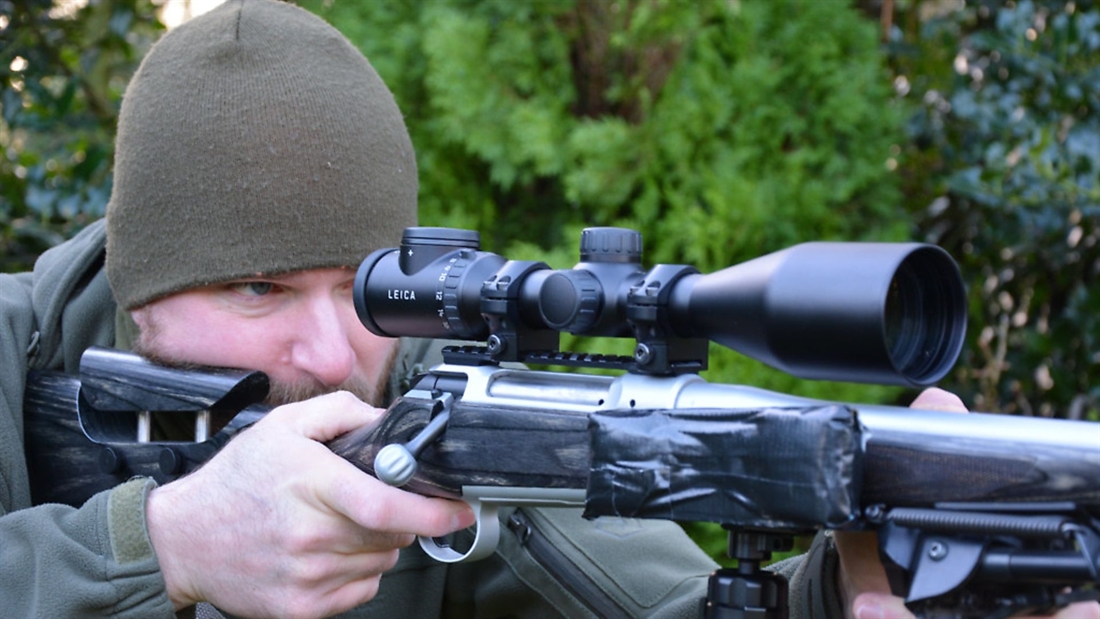
Chris Parkin puts the Leica Magnus 2.4-16×56 to the test… find out whether this rifle scope lived up to his high expectations
FOR
* Optically superb with colours that suit my eye
* Fine reticle with simple illuminated dot makes aiming a simple pleasure without distractions
* New battery compartment is far easier to operate
* Fastest illumination controls in the business, but at the cost of…
AGAINST
* … Nothing, really, a lovely optic!
VERDICT
* A great scope for precision aiming and a shame I didn’t have the full ballistic turret setup this time, which makes it a fine longer range tool. Subtle updates have tackled previous critique and it’s hard to find fault
TECH SPECS
Model: Leica Magnus 2.4-16×56
Magnification (x): 2.4-16
Objective lens (mm): 56
Main Tube Size (mm): 30 (Rail mount also available)
Reticle: L-4A/Plex in second focal plane
Illumination: Rotary On/off, twin position with auto off if vertical or laid on one side, rocker intensity control. 60 intensity increments.
Exit Pupil Diameter (mm): 12.4-3.5
Eye relief (mm): 90
Field of view (m/100m): 2.6-17
Light Transmission: 91%
Dioptric compensation (D): -4/+3
Impact Movement per Click (mm/100m): 10 (0.1mRad)
Windage and Elevation Adjustment Range (cm): 150 vertical/140 horizontal
Parallax Correction: Side parallax 50m-infinity
Weight (g): 785
Length (mm): 360
Water resistance: 4 metres (nitrogen filled)
Warranty: 10 Years
PRICE
£2,280
CONTACT
Website: http://uk.leica-camera.com
Tel: +44 (0) 207 629 1351
I took a Leica Magnus similar to this one to Ireland in 2015 for a superb sika deer hunting trip that left a lasting impression. Those sika deer make reds look a bit soft, and they need hitting precisely and quite hard to drop them where they stand, avoiding some very boggy retrieves. That Magnus had a ballistic turret on board with an internal Ballistic Plex reticle, too; it certainly got tested on that trip, dialling back and forth for three days at multiple ranges in wet, wild and windy conditions. Bumped and banged around in transit, it held zero perfectly and never missed a beat through snow and ice at home, either.
This latest updated model is of a slightly different specification, but has similar internal mechanics and 10mm at 100m clicks adjusting the Simple Plex reticle with illuminated dot. It’s a 30mm aluminium tube with a spacious 100mm of mounting length around the spherical saddle for the rings. A rail mount is also available if that suits your needs. Adjustments for windage and elevation are under rubberised aluminium caps with the parallax correction on the left side. The tube’s burnished finish is a deep matt lustre that doesn’t pick up the dust and debris from handling with fingertips – it wipes clean instantly. Leica lists 91% light transmission and, at this level, it’s no surprise to see a glorious, rich and colourful image with great contrast, even as light fades into dusk. Picking out shades of green and brown comes down to the individual colour sensitivity of your own eyes. Ninety millimetres of relief from the ocular lens leads you to a spacious eye-box, where you don’t find yourself straining to get a full circular picture at any magnification setting, and no aberration or vignetting disturbs relaxed viewing either. Internal reflections are well buffered, with no glare transmitting when your line of sight is close to a low winter sun on the relatively bright days.
With a maximum allowance of 150cm vertical, and 140cm of windage travel at 100m, zeroing presents no issues, unless your mounts and bases are a bit out of shape. There are 100 clicks per turn and each is well weighted with good tactile feel on the knurled 25mm dial, which actually runs further than the catalogue data specifies. Consider that with caution, though, as you are moving two tubes within each other and no scope will give you a perfect square of adjustment! The lower collar, with marking numbers on, can be easily spun back to denote actual ‘zero’ by pressing the dial’s centre. This lets them turn freely around the body without any audible or tactile clicking to confuse matters; it’s one of the simplest and most sensible systems I have seen on a hunting scope because it’s hard to move accidentally.
Other differences are harder to pick out on this updated version. They are subtle matters like the finer on-target subtension from the illuminated dot, improved battery life from the illumination of said dot, and the physical activation of the system. The 42mm illumination dial/rocker on top of the ocular body still rotates a few degrees in either direction to sun and moon symbols, assigning day or night modes, but underneath is one of the major changes – the battery compartment no longer has simple sprung clips and instead features a slide-off lever to release the battery after the upper dial has been unscrewed, and vice versa. The older clips were easily bent with fumbling hands, and I like the update with a simple coil spring below the cell; you just have to watch it doesn’t fly out too vigorously when you enthusiastically release the tension. Both modes have 60 intensity levels set by rocking the dial left or right for -/+, and it remembers its previous setting when turned back on in either day or night setting, so you can have two immediately independent pre-sets to suit your own eyes. It’s quick and intuitive even in gloves. You can’t fit a rear-mounted NV system, or Butler Creek, but Leica supplies elasticated lens caps with the Magnus; however, the standard of finish leaves no gaps between items – such as the turret caps, illumination control or, most importantly, the magnification control’s rubberised control ring just ahead – to fill with dust and debris. It has an ‘auto off’ after 30 minutes if the gun/scope is stationary, but relights immediately when the gun is moved. Likewise, when tipped on its side or 65 degrees down/85 degrees upwards, it turns off to save the CR 2032 battery life. Dioptre adjustability from -4 to +3 on the fast-focus eyepiece is superb for those needing a little extra movement in their optics, because it is a class leader. The reticle is very fine (5mm at 100m) and remains pin-sharp at all times for precise shot placement, with head shots on rabbits at dusk beyond 100m perfectly feasible. Deer and fox were no issue with an equally fine illuminated dot that never dazzled at either end of the light intensity scale, either within or externally.
Parallax is adjusted on the left side with a pleasantly weighted knob focusing the image clearly from 50m to infinity, correcting any likely aiming errors, especially at distance. Approximate markings are labelled on the circumference, but these just identify the likely direction you need to adjust towards.
In normal stalking territory, set it at about 150-200m and you are unlikely to have any concern for more detailed focus, unless you really do play at longer ranges and high magnification. The depth of field was versatile enough that on 6 or 8x I never touched it when on walkabout. Magnification increases from 2.4x up to 16x, controlled by a rubberised ring at the front of the ocular body. It is quite stiff but reassuringly smooth, with no hint of any internal motion from the helical adjusters running back and forth. There is a somewhat indistinguishable tactile indicator at 7x magnification that is okay with bare hands, but not so easily discernible in gloves.
Field of view is totally sharp with edge-to-edge clarity, although the image does ‘tunnel’ very, very slightly below 3x. This is utterly unproblematic and only noticeable to the critical eye looking to find intimate details. Fine optical resolution allows smaller targets to remain well defined, even at lower magnification, and the small centre illuminated dot was so easy to set up and initiate at short notice – dim for night time and bright during strong daylight. I often found with the original Magnus that the illumination dial was turned on whenever I took it out of its bag or cabinet, and the new firmer detents do make it harder to accidentally nudge it yet, even in gloves, it’s still easy to initiate quickly in the heat of the moment.
Related Articles
Get the latest news delivered direct to your door
Subscribe to Rifle Shooter
Elevate your shooting experience with a subscription to Rifle Shooter magazine, the UK’s premier publication for dedicated rifle enthusiasts.
Whether you’re a seasoned shot or new to the sport, Rifle Shooter delivers expert insights, in-depth gear reviews and invaluable techniques to enhance your skills. Each bi-monthly issue brings you the latest in deer stalking, foxing, long-range shooting, and international hunting adventures, all crafted by leading experts from Britain and around the world.
By subscribing, you’ll not only save on the retail price but also gain exclusive access to £2 million Public Liability Insurance, covering recreational and professional use of shotguns, rifles, and airguns.
Don’t miss out on the opportunity to join a community of passionate shooters and stay at the forefront of rifle technology and technique.



